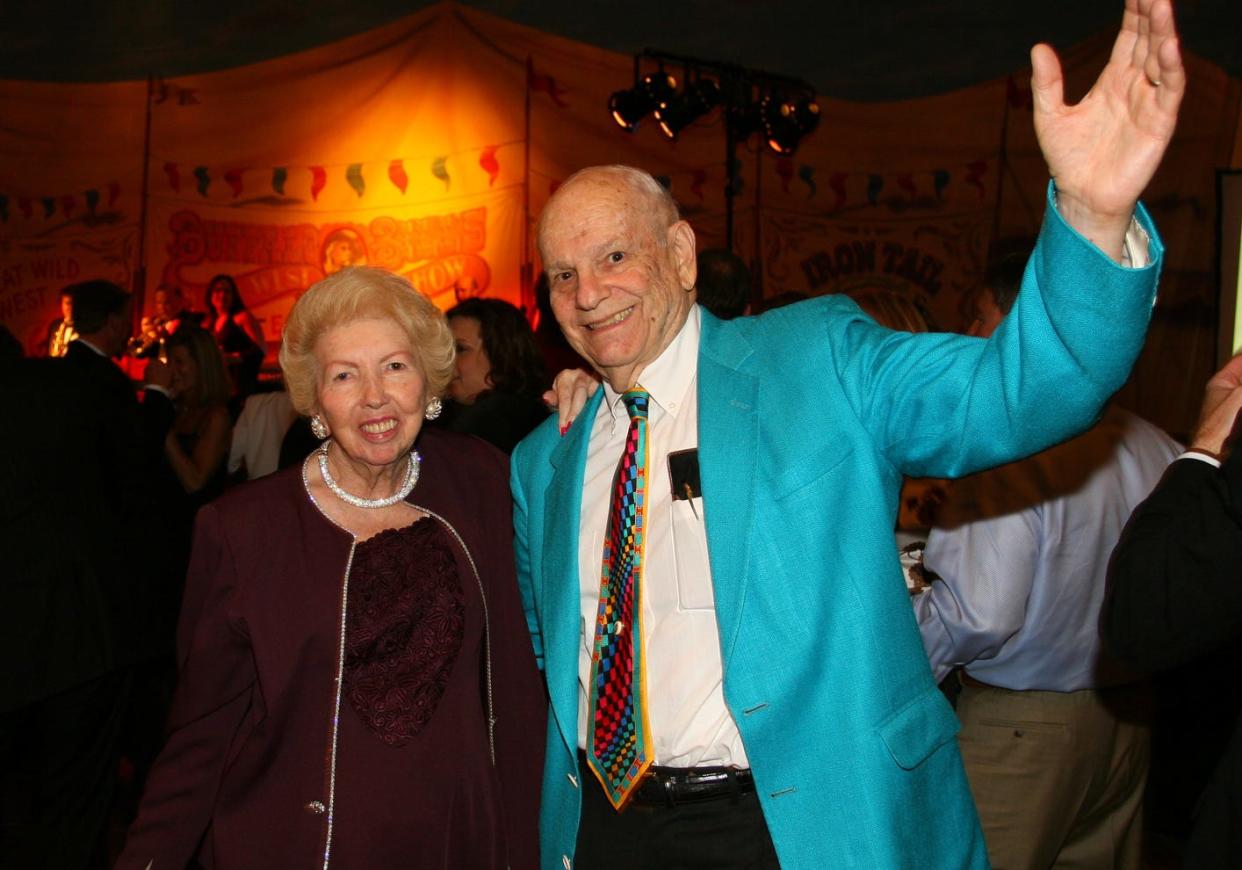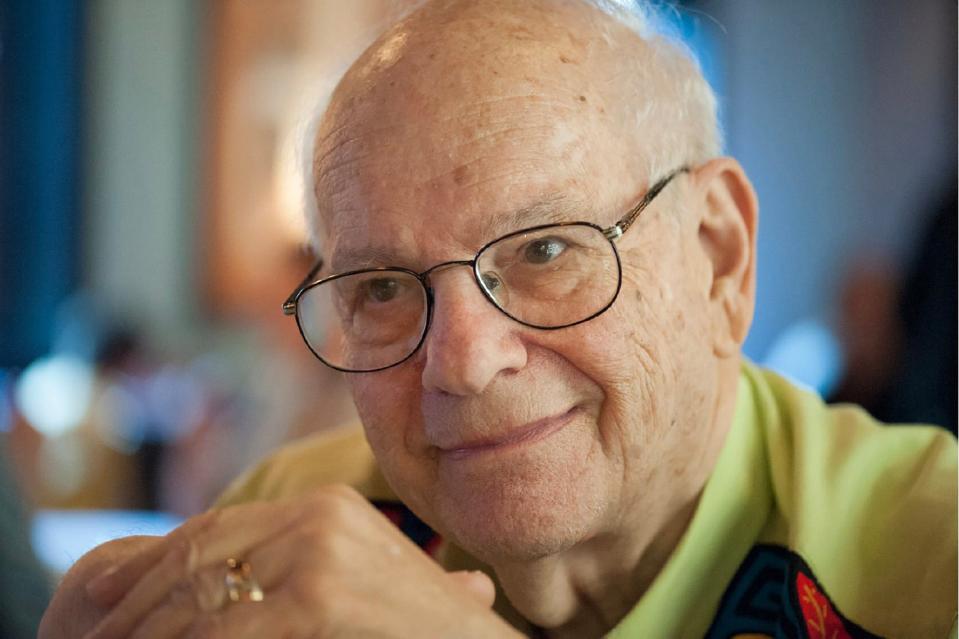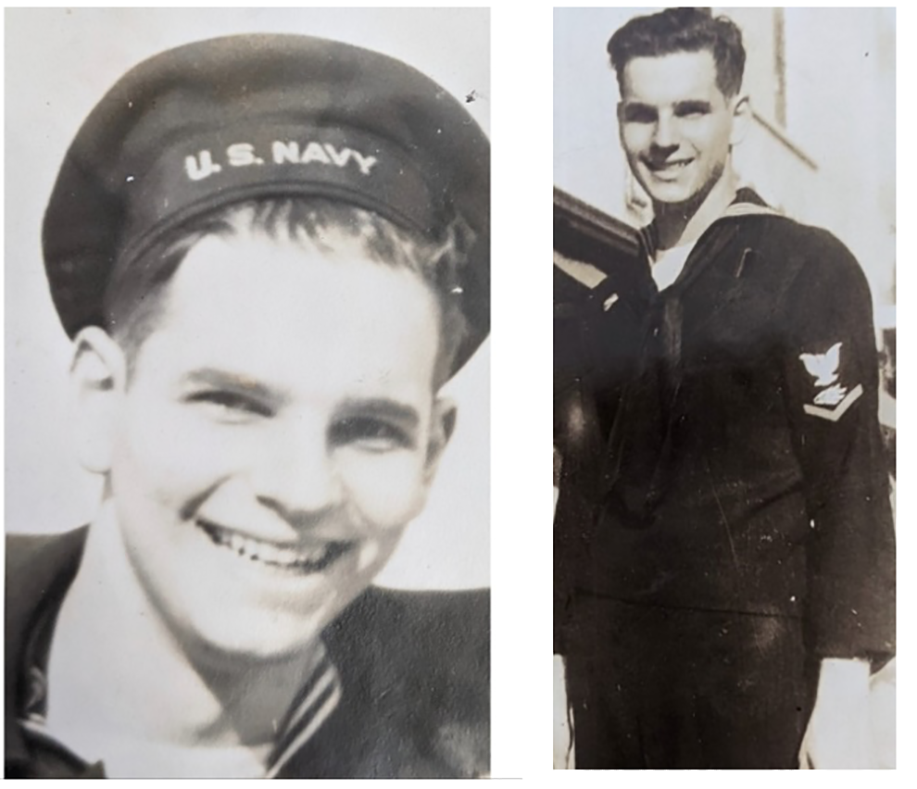Veterans Voice: Navy vet left his mark as a philanthropist

With the death of World War II Navy veteran Bob Galkin on July 13, two months short of his 96th birthday, the ranks of the Greatest Generation have been thinned again.
Full disclosure: Bob Galkin was a close personal friend. He and his brother Warren were my mentors in the two-decade quest to bring an aircraft carrier into Narragansett Bay as a family attraction, education/workforce development center and museum.
Bob, Warren and their family foundations made major contributions to this effort, as well as to the Rhode Island Aviation Hall of Fame.
“He was a wildly successful businessman, world traveler, spontaneous poet, and first man on the dance floor for over seven decades,” is how good friend Bill Maddox described Bob.
Bob made another mark as a philanthropist. A number of Rhode Island nonprofits will surely miss his generosity.

Bob successfully completed the Electronics Training Program, which was described in 1949 as “the most intense and difficult ever given to enlisted servicemen."
You’d never know that if you listened to Bob describe his Navy service. It was always humorous, and usually self-deprecating. Granted, the war ended before he was able to put that training to practical use, but the fact that he successfully completed it is an accomplishment in itself.
Early days
Bob was born Sept. 18, 1926 to Arthur and Shirley Galkin. Bob’s grandfather, Sam Galkin, had been born and raised in Sevastopol in the Crimea. Sam brought his Russian Jewish heritage to America in the latter part of the 19th century.
Arthur Galkin started a small wastepaper recycling company in Providence in 1917.
Remember those old doormats our grandparents had that were made out of large rubber beads with holes in the center, strung on parallel wires to create a mat? Well, Arthur Galkin invented them, in 1925.
He wanted to expand the recycling business from just paper, so he bought reject rubber floor tiles from US Rubber and turned them into new products, such as those doormats.
Bob graduated from Hope High School with the class of 1944. He entered Brown University, but was drafted at the end of his first semester.
After the war Bob returned to Brown, graduating in 1949 with a bachelor's in international relations, having spent a semester at Oxford on the GI Bill.
He immediately joined his father’s business, which by then had two divisions. One manufactured mats, matting and stair treads, primarily from recycled remnants from companies such as US Rubber. The second division manufactured beach and travel bags.
Bob went into sales, which at the time were limited to customers in the Northeast.
In 1952 he married Wini Blacher, who had just graduated from Pembroke. They traveled the country together, developing new markets and hiring salesmen to cover them. This trip turned Natco into a national company selling to most of the major chain stores.
“As a businessman, Bob was intelligent, creative, innovative and fearless,” said daughter Debby.
Brother Warren, now 93, joined Natco in 1957, after serving on active duty as an engineering officer in the Navy.
Veterans Voice: An advocate for others with service-related injuries
Veterans Voice: Recently passed legislation of interest to vets

Giving back
In recent years, Bob and Warren cut back on their active roles and became chairman and vice chairman of the board. Bob’s son-in-law, Mike Litner, took over as president.
This allowed the Galkins to travel the world with their families, as well as to become more involved in the community.
Through the Robert Galkin Private Foundation, they made major gifts to education, health and cultural institutions throughout the state.
He was active in Big Brothers Big Sisters of Rhode Island and a board member of Progress for Providence, serving inner-city, underprivileged groups.
The Preservation Society of Newport County also recognized the Galkins for their volunteerism.
Bob’s Navy career
Bob turned 18 in 1944, and his draft number came up during his freshman year at Brown. He learned that the Navy was testing college students for suitability to work in the newest fields of electronics. His mother, Shirley, encouraged him to go that route.
“I have no interest in practical science and have never studied it,” he told her. “I don’t know an amp from an ohm.”
Shirley Galkin fixed that. She set him up with a family friend; Bob prepared by studying electronics after school at WJAR radio. This enabled him to pass the Eddy Test, given by the Navy to potential electronic technicians.
He was accepted into the Electronics Training Program. After basic at Great Lakes Training Center, Bob went to Chicago for pre-radio school at the Theodore Herzl Junior College. This four-week curriculum was designed to weed out those not suited for the technical and academic challenges to follow.
The failure rate was high; only about 40% successfully completed this course.
“I graduated from Herzl and was ordered to Gulfport, Mississippi,” recalled Bob.
Primary school compressed the major topics of the first two years of a normal electrical engineering curriculum into three months. The courses in Gulfport were very challenging. “As the course became more sophisticated, my scores were perilously close to the bottom … those sailors who had slightly poorer test results than I were immediately transferred to the Pacific.”
With the filtering of pre-radio and primary, only very capable students made it into secondary school. This was where the sailors learned how to service and repair the actual pieces of equipment they would work with in the fleet.
This meant a return to Chicago for Bob, whose secondary school took place on Navy Pier.
Much of the equipment studied was classified Secret. The instructional compounds were all under 24-hour guard by armed Marines.
Bob Galkin goes to sea
After months of training on the Navy’s most sophisticated electronics gear, designed to detect enemy planes in the air and enemy subs beneath the sea, Bob was assigned to a rescue tug that plied the Gulf of Mexico, where there were no enemy planes or subs to worry about.
USS ATR-55 did not even have a real name, just a number. The tug displaced 850 tons, was 165 feet long, and carried a crew of five officers and 55 enlisted men.
His very first night at sea, he was assigned to wheel watch, responsible to keep his tug on a specific compass heading after they left Lake Charles and headed into the Gulf. Here’s how Bob described it.
“We were now out of sight of land and the weather became very windy with a rainstorm and rough seas.” He was holding onto the wheel for dear life, and was so dizzy he could not see the compass.
“Finally one of the officers came by to check the course and was shocked to see me just hanging on and obviously out of control. He corrected our course and found we had just two feet of water over the rocky bottom. He changed course and called for some help to get me to sick bay. I was out cold on the deck.”
After he recovered, he was told to report to the captain.
”He was smiling and said, ‘You aren’t much of a sailor, getting seasick on your first day at sea.’ ”
For the rest of his time aboard, Bob was the ship’s librarian and entertainment manager, and the "head captain" — responsible for cleaning the toilets.
“I enjoyed my life aboard the ship and the war was won without my help,” he recalled later.
Patron of naval and aviation history
I first met Bob Galkin in 1999, shortly after the Saratoga Museum Foundation announced its plan to bring the retired aircraft carrier to Quonset, similar to the Intrepid in New York. The newspaper included in its writeup a plea for office space. Bob called and offered us space, rent-free, at Natco’s Factory Street mill in West Warwick.
From that point on we became fast friends, and over time Bob, Warren and their wives became enthusiastic participants in a number of naval and aviation events and activities.
In the summer of 2001 the Saratoga Foundation arranged for Bob and Warren to participate in a Distinguished Visitor Embark. That consisted of a flight out to an aircraft carrier conducting training exercises off the Atlantic coast, and the opportunity to spend about 36 hours aboard watching our sailors and air crews in action. They would then be catapulted off the carrier for the return flight to Norfolk.
Bob was thrilled. On Aug. 31, 2001, he and Warren flew out to the USS George Washington.
“It was an exhausting, exhilarating and wonderful experience,” he wrote. “We saw America at its best. Young people with talent working hard to protect and project American influence around the globe.”
Ten days later, the attacks of 9/11 took place.
Bob helped with the rescue of artifacts from the USS Cabot, the last World War II aircraft carrier. He and Warren supported the restoration of the “Ted Williams Airplane,” a rare F9F Panther jet, the same type flown in combat in Korea by the baseball legend.
Bob and Warren were patrons of the 2004 Cold War at Sea conference, cosponsored by Saratoga Museum Foundation, the U.S. Naval War College and Brown University’s Watson Institute.
They were patrons of the Aviation Hall of Fame’s induction dinner every year. In 2017, that group renamed one of its awards in recognition of the many years of support and valuable contributions made by Robert and Warren Galkin.
The Galkin Award is given annually to someone whose contribution to aviation included an advancement of the field, be it though technology, design, implementation, exploration, bold initiative and/or risk-taking.
Launching a new career at 89
Trying to fight off depression caused by the illness and death of Wini in 2015, Bob began yet another career at age 89. Combining a fertile imagination with 75 years worth of travel and adventure experiences, Bob began writing action novels.
Daughter Debby wrote, “Over the past six years, he’s completed 24 novels (that’s not a typo), six screenplays and came close (twice) to making a Hollywood film.”
He formed a new company, Galkin Entertainment, to publish the books and manage the movie rights.
To put this prodigious output in perspective, consider that Ian Fleming of James Bond fame completed 11 Bond novels between 1953 and his death in 1964. A twelfth, half finished, was completed by another author and published after his death.
Calendar
Saturday, 1 to 4 p.m., learn to catch, shuck, and cook your own shellfish at North Kingstown Town Beach. Everything is free to service members, veterans, and their families. The Providence Vet Center is teaming up with Rhode Island Division of Fish and Wildlife Outdoor Education and local shellfisherman Jody King (USMC) to offer this opportunity. No RSVP needed. Contact Justyn Charon at (401) 739-0167 or Justyn.Charon@va.gov
Aug. 5, 11 a.m., RING retirees reunion/luncheon; Quonset Officers Club, 200 Lt. James Brown Rd., North Kingstown. Contact Bob Antonelli, (401) 837-6028 or bob02909@cox.net.
To report the outcome of a previous activity, or add a future event to our calendar, email the details (including a contact name and phone number/ email address) to veteranscolumn@providencejournal.com.
This article originally appeared on The Providence Journal: Veterans Voice: RI Navy vet left his mark as a philanthropist

